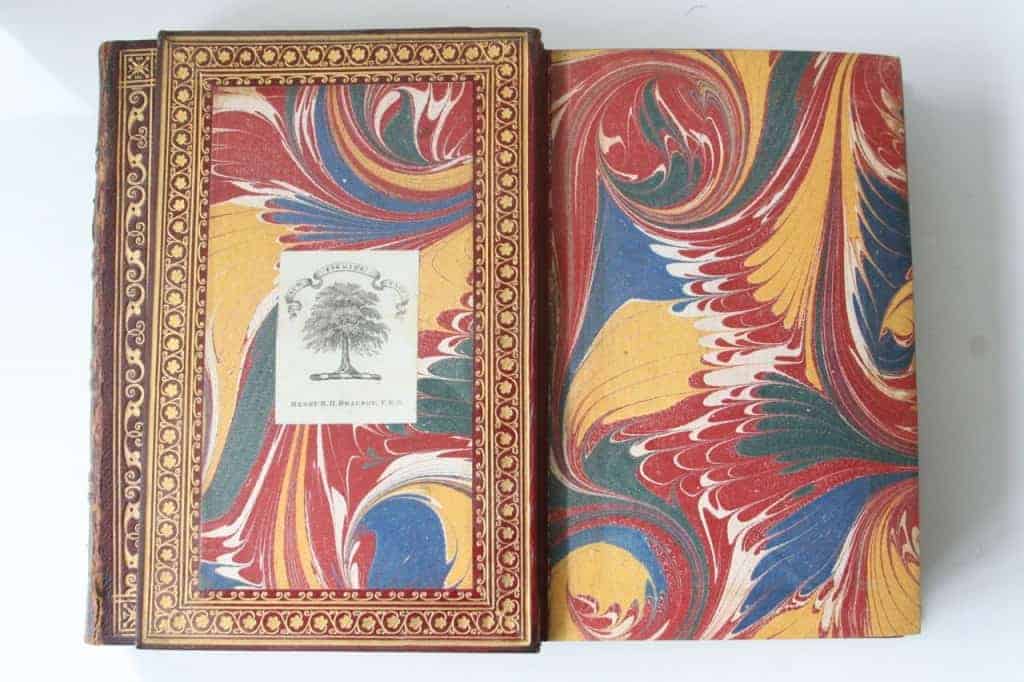May 20, 2013
RARE BOOK APPRAISAL : PROVENANCE
It is often necessary to examine books firsthand to appraise them properly. There are often attributes to a book besides the specific title, date or edition that can affect the value. One of those is certainly provenance, which may be formally defined as the “chronology of the ownership, custody or location of a historical object.” In simpler terms: who previously owned the book. So, how does prior ownership or provenance affect the value of a book? This is a question I am often asked by people who find signatures or inscriptions in their books.
Sometimes, if the book contains a signature or bookplate of a person of great literary, cultural, or historical importance, then the value of the book will clearly be affected. However, I am not talking here about books owned by George Washington (one of which sold for $9 Million). I wanted instead to look at the more subtle examples rare booksellers normally encounter: ownership marks of well known or important people, but not necessarily household names.
As a simple case study, I will examine one of the 19th century’s most popular works on archeology: Lazard’s Nineveh and its Remains. “Layard became the foremost archeologist of his time, and discovered the ancient ruins of Nineveh at the tender age of thirty-one. While the British Museum unloaded hundreds of tons of sculpture from Layard’s excavation, Layard wrote Nineveh and Its Remains, a popular account of his discoveries… The book appeared to rapturous acclaim and sold out numerous printings. Readers loved the fluent mix of high adventure and archeology in his books, and intoxicating stew of compelling characters and sudden crises. He made the Assyrians accessible to the common person and brought alive a shadowy Biblical civilization.” [Kessinger Publishing, LLC, describing the reprint]
Here is the simple description and photo of the set:
Layard, Austen Henry. Nineveh and its Remains. London, John Murray, 1849. 2nd ed., 2 vols. 8vo., 22 x 14.5 cm., complete with half-titles, 26 plates and plans (many folding), engraved folding map (short tear), occasional light spotting. Full fine crushed red morocco and gilt as depicted, all edges gilt, inner gilt dentelles, slight chipping to spine and rubbing to hinges.
Based solely on title, edition, and condition alone, we might consult one of the subscription auction databases such as the American Book Prices Current
A recent auction record of the set listed there is: Layard, Austen Henry, Sir, 1817-94 – Nineveh and its Remains. L, 1849 – 1st Ed – 2 vols. 8vo, – contemp half calf – rubbed – With 2 frontises, folded map & 24 plates. – Foxing – Winter, May 16, 2012, lot 40, £180 ($279). Because the attractive bindings on our set perhaps are more desirable that the half calf described in the auction record, we could reasonably increase the evaluation fo our set to $350.
However, upon examining this particular set, we find the 19th century Crest Bookplate of Henry B. H. Beaufoy, F.R.S, the famed hot-air
balloonist, Royal Society member, and bibliophile. Beaufoy owned an important library including a set of magnificent copies of the first four folios of Shakespeare, known now as the “Beaufoy Shakespeares” Copies of Beaufoy books, often splendidly bound, may be referred to reverentially as “the Beaufoy copy.”
Additionally when we open the set further, we find bound in before the preliminary pages a 10 PAGE MANUSCRIPT IN BEAUFOY’S HAND commenting on the work and furnishing details of the famous Beaufoy library. When reading this manuscript, it is mentioned that Layard (the author) was a family friend
and had donated a manuscript volume of another of his works to the prestigious library. It may be supposed, without proof (an authorial inscription), that this set may also have been a presentation from the author.
So, how does the Beaufoy provenance affect the value of a set that would normally sell for $350? This is, of course, a subjective question as the inclusion of the manuscript and provenance are unique attributes not found in other copies. Needless to say, is not unreasonable to add perhaps $400 to the value of the set, making the total value $750. Beaufoy may be fascinating to bibliophiles and book collectors, but he is no George Washington.




